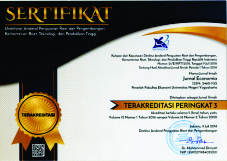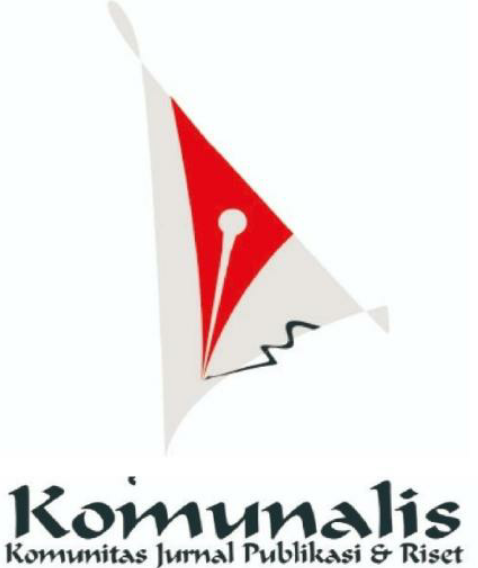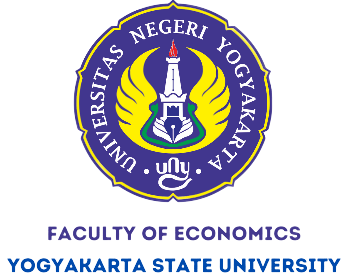Strategic Map of University Incubation Center
Downloads
Keywords: Strategic Map, Incubation Center, Indonesia, Taiwan
Peta Strategis Pusat Inkubasi Universitas
Abstrak: Penelitian ini bertujuan untuk menyelidiki peta strategis dari pusat inkubator. Proses inkubasi bisnis dapat bervariasi dari satu inkubator ke inkubator lainnya. Penelitian ini memperluas karya-karya sebelumnya untuk meningkatkan masalah inkubator bisnis solusi di Indonesia yang mengarah keunggulan kompetitif mereka menuju pasar global dibandingkan dengan kasus Taiwan. Penelitian ini menyelidiki berbagai jenis strategi inkubator bisnis untuk kasus Indonesia dan Taiwan dengan menggunakan kuantitatif dan kualitatif dengan primer yang telah dikumpulkan melalui survei dan observasi. Hasil penelitian menunjukkan bahwa Pusat Inkubasi Bisnis Chaoyang (CBIC) dan inkubator bisnis LPPM UNY memiliki pola strategi mereka yang sangat berbeda. Model pendukung bisnis merupakan CBIC adalah permintaan program: wirausaha dimulai, sedangkan LPPM satu adalah pasokan program: inisiasi inkubator. Inkubator bisnis LPPM UNY kemungkinan akan lebih aktif daripada BCIC. Namun, CBIC tampaknya mempromosikan wirausahawan lebih aktif daripada inkubator bisnis LPPM UNY.
Kata kunci: Peta Strategis, pusat Inkubator, Indonesia, Taiwan
Downloads
Allen, D. N., & Mccluskey, R. (1991). Structure, Policy, Services, and Performance in the Business Incubator Industry. Entrepreneurship Theory and Practice, 15(2), 61–77. https://doi.org/10.1177/104225879101500207
Callegati, E., Grandi, S., & Napier, G. (2005). Business Incubation and Venture Capital-An International Survey on Synergies and Challenges. Joint IPI/IKED Working Paper.
Gozali, L., Masrom, M., Haron, H. N., & Zagloel, T. Y. M. (2015). A Framework of Successful E-business Incubator for Indonesian Public. 8(2), 120–134.
Grimaldi, R., & Grandi, A. (2005). Business incubators and new venture creation: An assessment of incubating models. Technovation, 25(2), 111–121. https://doi.org/10.1016/S0166-4972(03)00076-2
Guerrero, Maribel; Urbano, David; Gajón, E. (2017). Higher Education Entrepreneurial Ecosystems: Exploring the Role of Business Incubators in an Emerging Economy. International Review of Entrepreneurship, 15(2), 173–202.
Halliday, M. A. K., Matthiessen, C. M. I. M., Santosa, R., Priyanto, A. D., Nuraeni, A., Ellyawati, H. C., ... Witjaksono, R. W. (2016). Implementasi Sistem Produksi Berbasis Odoo Pada PT. Primarindo Asia Infrastructure Tbk Dengan Metodologi ASAP. EProceedings of Engineering.
Jacob, M. (2017). Entrepreneurships and Startup Programmes: Opportunities in Travel and Tourism. Atna - Journal of Tourism Studies, 12(2), 51–65. https://doi.org/10.12727/ajts.18.3
Lalkaka, R. (2001). Best Practices ' in Business Incubation : Lessons ( yet to be ) Learned Rustam Lalkaka Policy & Business Ecosystem Innovation Entrepreneurship Competitiveness. Human Development, (November), 14–15.
Mariani, W. E., & Anom, I. G. A. (2020). The Characteristic of Business Incubator Tenant. 400(Icream 2019), 323–326. https://doi.org/10.2991/assehr.k.200130.194
Neck, H. M., Meyer, G. D., Cohen, B., & Corbett, A. C. (2004). An Entrepreneurial System View of New Venture Creation. Journal of Small Business Management, 42(2), 190–208. https://doi.org/10.1111/j.1540-627x.2004.00105.x
Ratinho, T. (2011). Are they helping? An examination of business incubators' impact on tenant firms. Retrieved from http://doc.utwente.nl/78235/1/thesis_T_Ratinho.pdf
Ratinho, T., Harms, R., & Groen, A. (2010). Are Business Incubators helping? The role of BIs in facilitating tenants ' development. Methodology, 1–35.
Ratinho, T., Harms, R., & Groen, A. (2013). Business incubators: (How) do they help their tenants? New Technology Based Firms in the New Millennium, 10(October), 161–182. https://doi.org/10.1108/S1876-0228(2013)0000010011
Ribeiro-Soriano, D. (2017). Small business and entrepreneurship: their role in economic and social development. Entrepreneurship and Regional Development, 29(1–2), 1–3. https://doi.org/10.1080/08985626.2016.1255438
Romein, A., & Trip, J. J. (2017). The role of business incubators in the development of sustainable clusters of cultural and creative industries. International Journal of Sustainable Development and Planning, 12(3), 435–445. https://doi.org/10.2495/SDP-V12-N3-435-445
Rose, A. (2016). A multi-stakeholder view on business incubator effectiveness. (November), 130.
Sentana, E., González, R., Gascó, J., & Llopis, J. (2017). The social profitability of business incubators: a measurement proposal. Entrepreneurship and Regional Development, 29(1–2), 116–136. https://doi.org/10.1080/08985626.2016.1255436
Soenarso, W. S., Nugraha, D., & Listyaningrum, E. (2013). Development of Science and Technology Park (STP) in Indonesia to Support Innovation-Based Regional Economy: Concept and Early Stage Development. World Technopolis Review, 2(1), 32–42. https://doi.org/10.7165/wtr2013.2.1.32
Xiao, L., & North, D. (2017). The graduation performance of technology business incubators in China's three tier cities: the role of incubator funding, technical support, and entrepreneurial mentoring. Journal of Technology Transfer, 42(3), 615–634. https://doi.org/10.1007/s10961-016-9493-4















